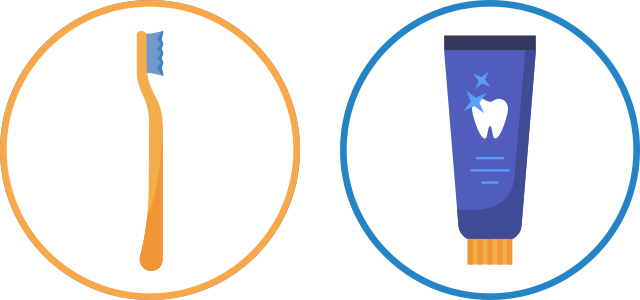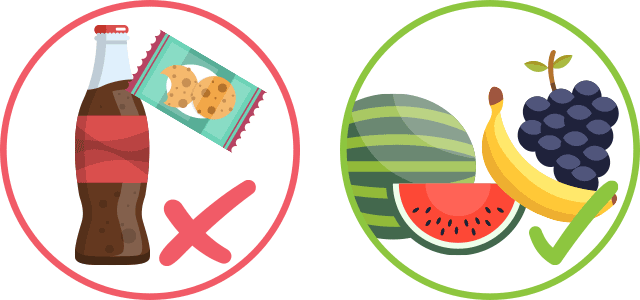We have all been touched in our lives by a child with autism at one time or another. More and more children are getting to be diagnosed with autism, and so it is not uncommon that we know someone who has it, or even a family member. In the Philippines, it is estimated that one out of every 100 Filipinos has autism.
Autism is a neurological and developmental disorder that affects an individual’s behavior, communication and social skills. Autism is regarded as a spectrum disorder, with a vast variety of signs manifesting in different individuals. Some children are non verbal and are not able to communicate well, while others are proficient in language. Some have repetitive behavior (stimming), but others don’t exhibit this. Usually, what is common in people inflicted with autism are difficulty in their social skills, poor eye contact, are resistant to change, have difficulty regulating their emotions and have sensory issues. Its severity can differ greatly from one person to another. Sometimes, attention deficiency hyperactivity disorder, epilepsy and intellectual disability accompanies autism, which makes it more difficult to manage the children.
We see a lot of children with autism at the Pediatric Dentistry Center Philippines, who are in pain because of their tooth decay. Although tooth decay is preventable, it is not surprising that patients with autism have tooth decay. With their sensory problems, their parents have difficulty in brushing their teeth. With their “routine” behavior, it is hard to wean them from their night time bottle feeding. And because of the parents’ difficulty in managing the behavior of the child, giving the children any food or snack (which are usually high in sugar) is usually the solution to comfort them. All these contribute to the formation of dental cavities, which eventually leads to pain and infection. While tooth decay is preventable, it is admittedly harder to prevent this for children with special needs because of their particular challenges.
Whether the child is high functioning or has the severe form of autism, here are some tips for parents and for anyone caring for a child with autism, on how to take care of their child’s oral health:
1. Take note of your child’s sensory issues.

Children with autism has sensory issues. They react unusually to any of the their senses — light, sound, touch, taste and smell. This unusual reaction results in a sensory imbalance affecting how they process information, including pain. Some are hypersensitive to either touch, sounds or light that they perceive toothbrushing as painful, the light of the dental chair unbearable and the sound of the drill intolerable.
With the help of the child’s occupational therapist, desensitizing the child helps greatly.
Using a sensory brush, brushing the child’s skin using very firm pressure on his arms and legs help with sensory integration. While there is not much evidence with this method, many parents have reported a decreased fear or discomfort of being touched and better self-regulation. Massaging the gums before toothbrushing can be helpful too. While there is a risk of getting bitten by the child during an intra-oral massage as many of them are sensory-seeking, I believe this helps to desensitize the child, and will make the child accept toothbrushing.
2. Establish a routine for toothbrushing. Brush the child’s teeth day and night.

As children with autism thrive on routine, toothbrushing therefore can be taught and can happen regularly with minimal struggle and tears. It is recommended to brush teeth twice a day — it should be the last activity before sleeping, and another time during the day, ideally before going to school. Sticking to a routine everyday greatly helps a child with autism, as he is able to expect and condition himself for toothbrushing.
Try not to break this routine for toothbrushing. Be firm, even when kicking and biting happens during the first few days. As the child learns the routine eventually, he will be the one to get the toothbrush willingly when it’s time for it. Don’t be disheartened if it takes time for your child to get this routine. Some children need more time than others.
3. Choose the right toothbrush and toothpaste.

With the child’s sensory issues, choosing the right toothbrush and toothpaste for your child is crucial. Soft bristles with a small head can help those with oral sensitivities. A gentle toothbrush can help desensitize a child’s mouth and gums; and a small toothbrush head allows the child to gradually get accustomed to the sensation of brushing, without overwhelming him additionally.
Toothpastes can also bring a sensory overload to a child with autism, because of its foam, its strong minty taste and bright color. Choosing the right toothpaste can be a hit or miss, depending on the child’s preference. More often than not, they like unflavored toothpaste, with less sodium lauryl sulfate (so it will be less foamy). Opt for toothpastes containing at least 1,000 ppm of fluoride, as the water in the Philippines is not fluoridated. Fluoride is a mineral that helps to remineralize teeth and therefore is helpful to prevent tooth decay. While we know that children with autism may take longer to learn how to spit, control the amount of toothpaste you place on the toothbrush. As a general rule, the European Academy of Pediatric Dentistry recommends a smear amount of toothpaste for children below 2 years old and a pea size amount for the 2-6 year old children.
4. Bring your child to the dentist regularly by one year old.

Going to the dentist by the child’s first birthday ensures that you are made aware of what to do for your child to have good oral health. Remember that tooth decay is preventable; and this can be avoided by proper toothbrushing and good eating habits. Your dentist will be able to teach you how to brush the teeth of your sensory-challenged child; and give you practical tips how to manage him.
Having regular dental visits is beneficial so the child will get used to the abundant- sensory-dental clinic — with its strong lights, sound and smell that fills the room. Setting up a relationship early with your child’s dentist not only establishes the rapport between them for better future dental visits but frequent monitoring of your child’s oral health will help prevent pain and infection.
5. Avoid sugar.

Sugar is an essential factor of tooth decay. Tooth decay does not happen in the absence of dietary sugar. Children who have more tooth decay have a higher intake of free sugars. The World Health Organization in 2017 recommends to limit free sugar intake to no less than 5% of total energy intake to minimize the risk of tooth decay. The American Heart Association recommends that sugar should NOT be given to children below 2 years old and that children 2-18 years old limit their sugar intake to 25 grams per day or 6 tsps of added sugars daily. High sugar snacks include pastries, cookies, candies, doughnuts and even formula milk; and let’s not forget the sugar sweetened beverages that are so popular nowadays, like milk tea, coffee drinks, sports drinks and juices. The American Academy of Pediatric Dentistry recommends that 100% fruit juice should not be introduced before 12 months old and limited to not more than 4 ounces per day for the 1-3 year old children.
While we know that it is hard to control the children’s sugar intake, we find that it is better that we start good habits while they are young. Wean the child from nighttime bottle feeding by age one. It is our experience that it gets harder to take away the bottle at bedtime when they are weaned when they are older. Limiting sugar intake to meals and taking it as a dessert satisfies their sugar craving. Restricting high sugar snacks is also possible by regulating it — giving it as a reward for a job well done twice a week or substituting them with healthier snacks like fruits, cheese or even sugar-free snacks. When eating or drinking high sugary snacks becomes a reward rather than a normal occurrence, the children don’t look for it. Let us, as adults and their caregivers, be a good example for them. Control buying these snacks so the children have limited access to them. And we, ourselves, should also be conscious of what we eat when we are with the children.
While one strategy may work for one child, but the other strategy doesn’t, it is important to know your child and see what he needs. Focus on your child’s strength, of what you think he is capable of. Seek the guidance of your dentist to help you. It can be challenging to take care of children with autism, but it is greatly rewarding when they learn what we teach them.